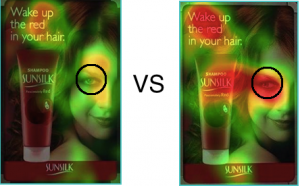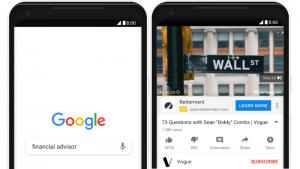My father started his marketing career in the days of Mad Men. He has shared that in many ways marketing was simpler then. You put an ad on the three TV networks and in a couple leading magazines, and people likely bought your product. But even in the days of fewer media choices, some brands were more effective than others. Even today, we remember ads such as “Don’t squeeze the Charmin,” Wisk’s “ring around the collar,” and the “slowest ketchup” from Heinz. These ads did not just explain the product, they told a story—and they used in emotion in marketing.
Sell Benefits Not Features
In school, we were taught to communicate product benefits, not just product features. Yet, you can still find plenty of ads, and packaging, with a just list of facts—the features of a product or service.
We know communicating product benefits will likely have more impact. Consumers are buying the benefit of the product or service they purchase. Consumers do not want a drill. They want to be able to put holes in a wall or in a board as needed. Consumers do not necessarily want any piece of meat and some vegetables on a plate. They want a nice dinner out with friends or family. They do not want a plumber to spend time at their house; they want their plumbing to work properly. Even with many great marketers in the world, we still see complex in-store displays and packaging making it confusing for consumers to a select a drill. We see ads and websites for restaurants that tell us little about the experience of eating there. We see ads for plumbers that all look like the other ads for plumbers. There are plenty of facts…but little to engage the emotions and interest of a potential buyer, little leveraging of emotion in marketing.
Consumers want to not only understand a product benefit but also whether that benefit fits their specific wants and needs. This is a key reason why adding independent consumer product reviews on an e-commerce website can lift sales. Consumers can learn from their peers about the strengths and experiences of others. This helps consumers internalize whether this product will fit their needs. This thought process is often both rational and emotional. The decision is often based about how they will feel about a given product solution.
Tell Stories About Benefits For Emotion In Marketing
Customers want to quickly understand if a product or service is right for them. Listing your benefits will not always work—your customer logically understands what you offer but may not see it as the right choice or be motivated by the message. In a world of many choices, engaging your prospective customer in a story can be a more effective way to engage shoppers in your product benefits and to leverage emotion in marketing.
Stories often have an emotional component that benefit statements do not. Stories can bring a product experience to life. How strong would the BMW tagline of “The Ultimate Driving Machine” be if they did not repeatedly show the experience of driving their cars?
Why do wine bottles with a story tag on display seem more interesting? When you learn the story behind a bottle of wine along with how it tastes, it can be more attractive. The story tag gets your attention; the emotions and senses triggered by the story make the wine desirable.
Sustainable Stories That Engage Emotions Build Brands
A strong differentiating brand positioning statement will set your brand apart. The ability to weave that brand positioning into a story that uses emotion in marketing and engages the customers will win shoppers and often their loyalty. Emotions can be engaged quickly but brand loyalty takes time to build.
Brands using emotion in marketing can move from engaging emotions to creating an emotional connection with their brand and to building a lasting emotional bond will achieve purchase loyalty. If a brand can consistently engage consumer emotions and satisfaction, they can successfully create brand advocates who help tell their brand story for them. Consistency in brand storytelling over time not only solidifies a brand’s position in consumer’s minds, but also helps them share why they are loyal to a product.
For years, Bush’s Beans has engaged consumers in a fun story where Duke the family dog wants to sell the family secret recipe for great beans. While for some this is just a clever ad device, it also engages us in the story – that Bush Beans are a family recipe that has been around for a generation – and the recipe is so good, it is top secret. This story, combined with their “beautiful bean footage,” engages the emotions of the viewers and continues to grow sales for the brand.
Overcome The Barrier To Adding More Emotion In Marketing
So if stories are so effective, why don’t more brands use them? Storytelling has certainly grown in popularity in recent years. The barrier for many companies is that identifying or creating your brand’s compelling story takes work. It takes time. It is easier and faster to create a feature or benefit list. Creating a story that demonstrates your benefit in a way that engages emotions takes effort—but that effort can be rewarded handsomely when you identify the right authentic story for your brand.
Yes, Bush Beans has an authentic family recipe. The recipe has been a family secret for decades. Yes, they are good beans. The Bush Family has been canning beans since the 1930’s. It took a story with a talking dog to highly engage consumers in buying their beans and become loyal customers.
Find your story and help your brand engage the emotions and loyalty of new generation of consumers using emotion in marketing.
Business Articles | Business 2 Community
(310)




